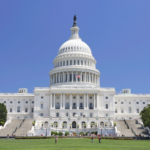Protests in Iran
You may have heard about protests happening recently in nearby cities, or even within your own community. But protests happen in other parts of the world as well–sometimes with deadly results. In Iran, uprisings that began in late December have now fallen silent. Even with a high death toll, virtually nothing has changed as a result of the protests. Here, Election Central takes a look at what caused the Iranian protests, and whether or not it is possible that the issues behind the protest action will be able to spark any real change in the future.
So What Happened?
On December 28, 2017, there was a small street protest in the city of Mashhad over high prices. This protest quickly grew to include about 85 other cities and towns. Protestors spoke out about high unemployment and oppressive rulers. The uprising went on for ten days. On day 4, the government called in the Islamic Revolutionary Guard Corps to quell the protests. When the uprising finally ended on day 10, 25 people were dead and another 3,700 had been tortured and/or arrested.
Social protests in Iran aren’t unusual: roughly 1,700 have been reported since March 2016. So what made the recent uprising different? For one thing, it spread very quickly across the entire country. Second, it was very political in nature and involved violence. Third, it was led by angry young people in their 20s (over 90 percent of those arrested were under 25). Traditionally, protests are led by the labor movement and poor, unskilled workers. But the young people leading the recent protests represent the “middle-class poor”–people who are educated and yet can’t find a job. (Currently, 2.5 million college graduates in Iran don’t have work.) In other words, these events were more like a nation-wide revolt than just a simple protest.
What’s Next?
So will this series of actions in Iran result in something broader and more long-term? It seems unlikely. While the protests were widespread across the country, the number of people who actually participated in them was relatively small. Most people remained onlookers. Many Iranians are afraid that their country will become torn apart like the civil war that is impacting Syria. So many Iranians are not interested in any kind of nationwide uprising. It’s also hard to have a revolution without the support of most of the economic classes. This latest protest didn’t involve the extremely poor, or the wealthier middle-class.
But because the uprising has now ended and nothing has really changed, the anger of the young, educated, middle-class poor remains. It’s possible that if they organize behind a common message and vision, and gather the support of all social classes as well as some political factions, another more significant revolt could take place in the future.



